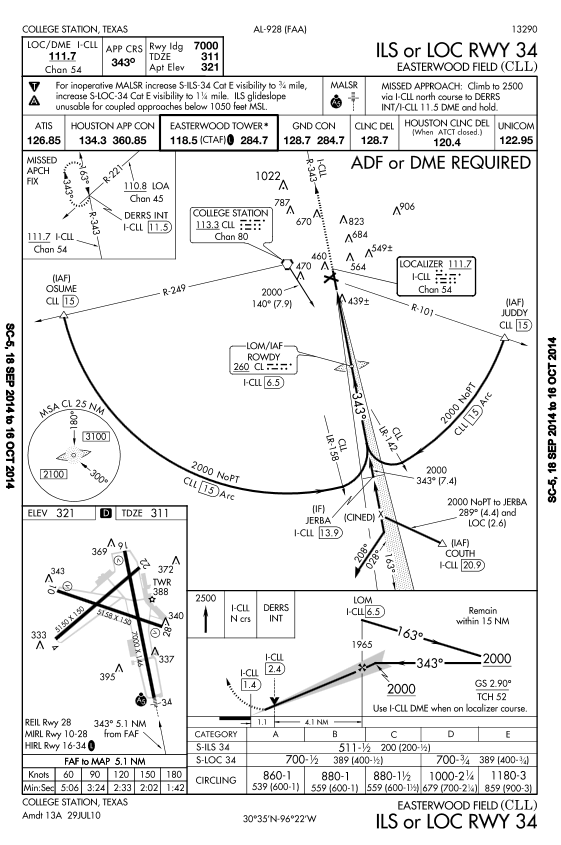Watch the DME and if it starts to show a distance other than 15.0 DME, you need to turn more or less toward the VORTAC. Because of wind, the heading required to maintain the arc will rarely be exactly 90 degrees different from the radial. The speed readout on the DME should be close to zero knots, indicating the airplane is not moving to or away from the VORTAC. Track the arc until you reach the depicted lead radial on the chart. In this case, it is the CLL 158 radial. Upon reaching the lead radial, a turn can be made to join the localizer.
A teardrop reversal is used at some airports, as in the ILS or LOC runway 18 at Lincoln, Nebraska, for example. If cleared for the approach using the LNK VORTAC as the initial approach fix, you would fly outbound on the 321 radial to JUSAM, as depicted. From there, we can make a right turn to join the localizer. The profile view informs us the teardrop must be flown at or above 3,200 feet. Descent to 2,900 feet is permitted on the localizer and inside ESACO. If a teardrop is depicted, it is mandatory unless otherwise authorized by ATC.
If two parallel runways are separated by less than 1,200 feet, air traffic control may have you side step to the parallel runway. After the ILS to 18 at Lincoln, for example, the air traffic control tower might tell you to "side step to runway 17, runway 17 cleared to land." You should continue the approach to runway 18 and side step to runway 17 when the runway environment is in sight.
Air traffic control could clear you for approach from the enroute environment by simply stating, "cleared approach". If you are given this type of approach, in which no runway is specified, ATC is clearing you to make an approach to that airport. This authorizes you do conduct any approach for that airport.
If you are told while enroute to "cruise" by air traffic control, you are also being released to conduct any approach you choose to an airport. For example, say you are flying along and air traffic control states, "Cessna seven zero eight golf lima, cruise 5,000". This cruise clearance authorizes you to descend at pilot's discretion from 5,000 all the way down to the minimum IFR altitude for your route and conduct any approach you desire at your destination airport.
Circling
Once you have reached the circling MDA and spotted the runway, care must be taken to maintain altitude during your circle. If you climb, you might go back into the clouds and lose the runway. You also must not descend below the MDA necessary for landing. It is okay, however, to fly at some altitude higher than MDA when weather allows. Flying at normal traffic pattern altitude, for example, provides a more normal perspective for landing.
The protected area for an aircraft on a circle to land is determined by measuring a radius from the end of each runway. The radius distance is 1.3 miles for Category A, 1.5 for Category B, 1.7 miles for Category C, 2.3 miles for Category D, and 4.5 miles for Category E. The circling MDA provides 300 feet of obstruction clearance inside this circling area.


